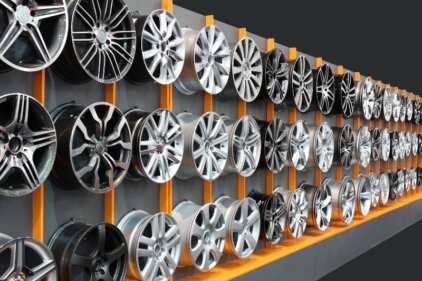Wood gas cars have a rich and intriguing history that dates back to the early 19th century. These vehicles, which relied on the process of wood gasification as a fuel source, were once a common sight on the roads. However, as technology advanced and alternative fuels became more readily available, the popularity of wood gas cars declined. In this article, I will take you on a journey through time to delve into the origins of wood gasification technology, its prominence during World War II, the subsequent decline, and the modern applications of this fascinating technology. We will also explore the advantages and disadvantages of wood gas cars, learn how to build one, and discover the vibrant community of wood gas car enthusiasts. So, fasten your seatbelts as we embark on this historical exploration of wood gas cars.
Introduction to Wood Gas Cars
Wood gasification technology can be traced back to the early 19th century when inventors began experimenting with using wood as a fuel source for internal combustion engines. The process of wood gasification involves heating wood in a controlled environment, which releases flammable gases such as hydrogen, carbon monoxide, and methane. These gases, collectively known as wood gas or producer gas, can then be used to power an engine.
The Origins of Wood Gasification Technology
The concept of wood gasification was popularized by engineer and inventor George Imbert in the early 20th century. Imbert developed a gasifier design that efficiently converted wood into usable gas for vehicles. His invention revolutionized the use of wood as a fuel source and paved the way for the widespread adoption of wood gas cars.
Wood Gas Cars During World War II
Wood gas cars reached the peak of their popularity during World War II when petroleum shortages led to a scarcity of gasoline. Many countries, including Germany, Sweden, and Finland, turned to wood gasification as an alternative fuel solution. Wood gas vehicles became a common sight on the streets, with thousands of cars, buses, and even trucks running on wood gas.
The Decline of Wood Gas Cars
After World War II, the availability of petroleum-based fuels increased, leading to a decline in the use of wood gas cars. The convenience and efficiency of gasoline and diesel engines overshadowed the labor-intensive process of wood gasification. As a result, wood gas cars gradually faded into obscurity, becoming a relic of the past.
Modern Applications of Wood Gasification Technology
While wood gas cars may no longer dominate the roads, wood gasification technology has found new applications in the modern world. Today, wood gasification is used for power generation in remote areas where conventional fuels are scarce. It is also employed in biomass power plants to produce electricity. Additionally, wood gasification has gained attention as a sustainable and renewable energy source, contributing to efforts in reducing carbon emissions.
Advantages and Disadvantages of Wood Gas Cars
Wood gas cars have their advantages and disadvantages. On one hand, wood gas is a renewable and carbon-neutral fuel, reducing reliance on fossil fuels. Wood gasification also provides an opportunity to utilize waste wood and agricultural residues, making it an environmentally friendly option. However, wood gas cars require regular maintenance of the gasifier, and the process of wood gasification can be complex and time-consuming. Moreover, wood gas cars have limited range and power compared to conventional vehicles.
How to Build Your Own Wood Gas Car
If you are intrigued by the idea of owning a wood gas car, building your own can be a rewarding project. However, it requires careful planning, engineering knowledge, and expertise in wood gasification technology. The process involves constructing a gasifier, modifying the engine, and ensuring proper safety measures. It is crucial to thoroughly research and understand the technical aspects before embarking on such a venture.
Wood Gas Car Enthusiasts and Communities
Despite the decline in popularity, wood gas car enthusiasts and communities still exist today. These passionate individuals share their knowledge, experiences, and innovations related to wood gasification. Online forums, social media groups, and gatherings provide a platform for enthusiasts to connect, exchange ideas, and collaborate on new projects. The camaraderie within the wood gas car community ensures that the history and legacy of these vehicles are not forgotten.
The Future of Wood Gas Cars
As the world continues to seek sustainable and renewable energy solutions, wood gas cars may experience a resurgence. With advancements in technology and a growing interest in reducing carbon emissions, wood gasification could become a viable alternative to conventional fuels. However, the practicality and widespread adoption of wood gas cars in the future remain uncertain. Only time will tell if these vehicles will once again grace the roads.
Conclusion
The history of wood gas cars is a testament to human innovation and adaptability. From their humble origins in the 19th century to their prominence during World War II, wood gas cars have left an indelible mark on the automotive industry. Although their popularity waned, wood gasification technology continues to find relevance in modern applications. Whether it is powering remote areas or contributing to sustainable energy solutions, wood gasification offers a glimpse into a greener future. So, let us remember and appreciate the fascinating past of wood gas cars, while keeping an eye on the potential they hold for the future.





